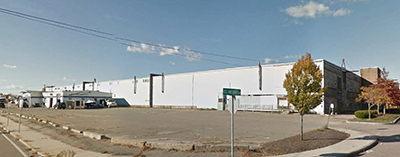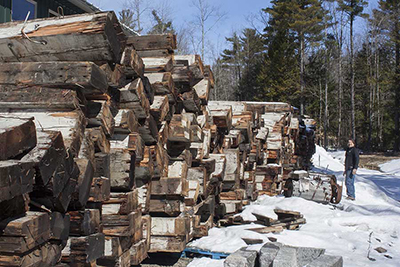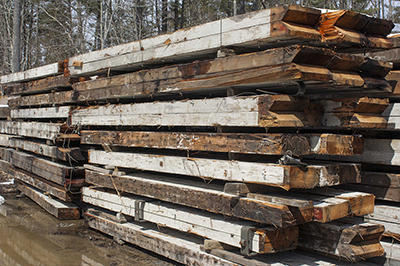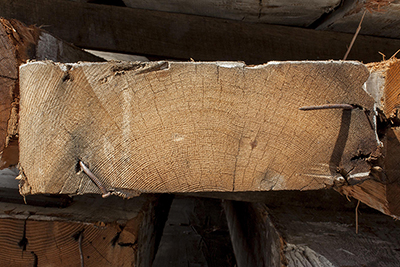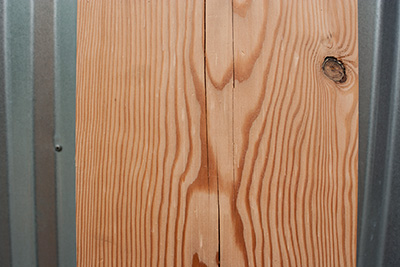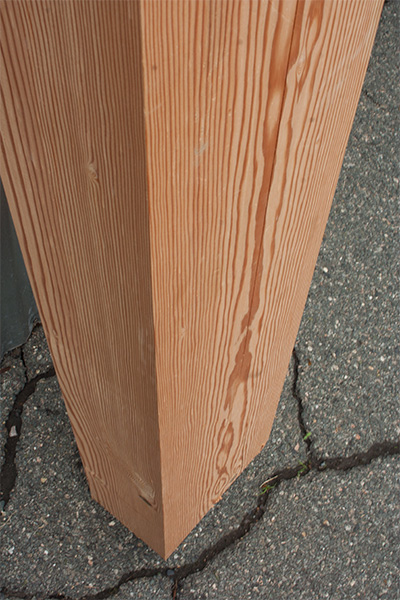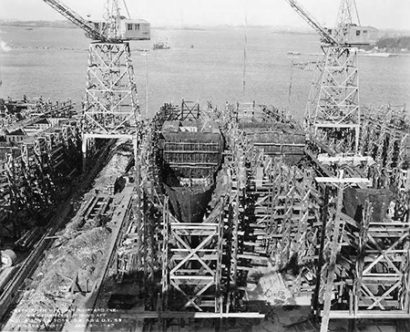
HINGHAM, MA ~ 1942
Longleaf Lumber recently reclaimed large Douglas fir timbers from a World War II-era building that played a major role in the U.S. war effort. The structure, which was part of the naval shipyard in Hingham, Massachusetts, was recently razed to make way for a residential development - part of an ongoing revitalization of the old Hingham Navy Yard.
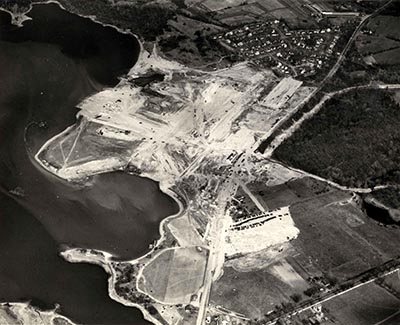 At the onset of the Second World War, Hingham was a small, quiet town on the southern coast of Massachusetts with big changes on its horizon. When fighting intensified for our overseas allies, the United States began producing military ships for their efforts. Because existing shipyards were already operating at full capacity, there was an urgent need for new facilities. Naval officials decided that Hingham, with its deep harbor and few existing buildings, would be the perfect place to build one.
At the onset of the Second World War, Hingham was a small, quiet town on the southern coast of Massachusetts with big changes on its horizon. When fighting intensified for our overseas allies, the United States began producing military ships for their efforts. Because existing shipyards were already operating at full capacity, there was an urgent need for new facilities. Naval officials decided that Hingham, with its deep harbor and few existing buildings, would be the perfect place to build one.
Just weeks after after the 1941 attack on Pearl Harbor, 150 acres of land were cleared in Hingham and construction began on a new steel mill and shipyard. Cranes were installed and wooden cradles built to contain the ships as they were assembled. The Bethlehem Hingham Shipyard that resulted was a sub-yard of the Fore River Shipyard in Quincy, which was owned by the Bethlehem Shipbuilding Corporation.
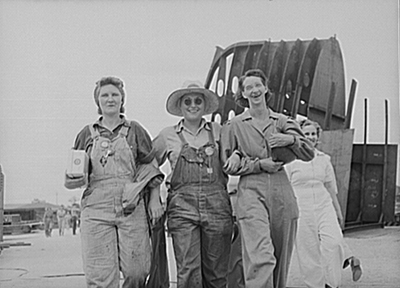
Much of the World War II-era yard has now been redeveloped and exists as a multi-use residential and commercial area known as the Hingham Shipyard. The area includes rental housing and condominiums; office, retail, and restaurant space; marinas; and public space with waterfront access - including commuter ferry service. Adjacent to this redevelopment is a smaller 3.8 acre shipyard parcel, which - until recently - was home to an 1942 industrial warehouse with the address 319 Lincoln Street. This building housed the corporate office and retail warehouse for Building #19, a well-known and quirky discount warehouse chain. Building #19 had occupied this warehouse for over 40 years.
In 2014, the property was sold and is now being developed as Hingham Shipyard Avalon II, with 190 condominiums, 48 of which will be reserved for low and moderate income families. The 80,000 square foot building, which was a two-story industrial warehouse framed in Douglas fir and with a metal exterior, was demolished in the winter of 2016-2017. The structure had reached the end of its useful life and was suffering from neglect. In 2015, the building had to be evacuated after a porch collapsed and inspectors found serious structural problems in the main warehouse space.
Longleaf Lumber is excited to have been able to reclaim many of the 5-1/2" and 7-1/2" by 15" antique fir beams. After sorting out broken and unusable timbers at the demolition site, the lumber was shipped to our Berwick, Maine mill where it will be de-nailed, sawn to dimension, and kiln-dried. We will produce reclaimed Douglas fir flooring, paneling, and other millwork with the material, and will likely kiln-dry and re-sell some of the beams to be repurposed as whole pieces for homes, offices, and retail stores. It's comforting to know that the spirit of service embodied by these shipyard timbers will be carried forward into their next home.

